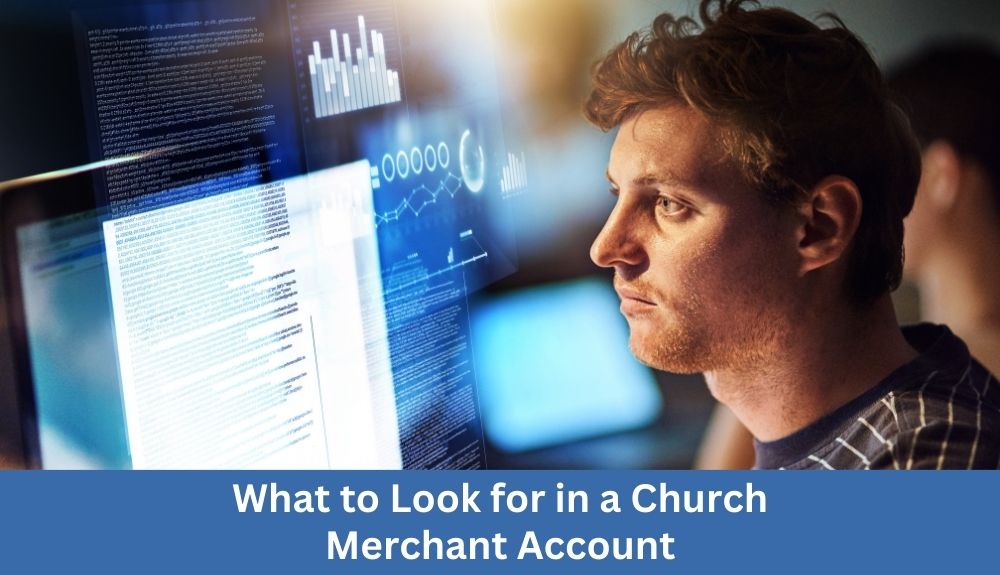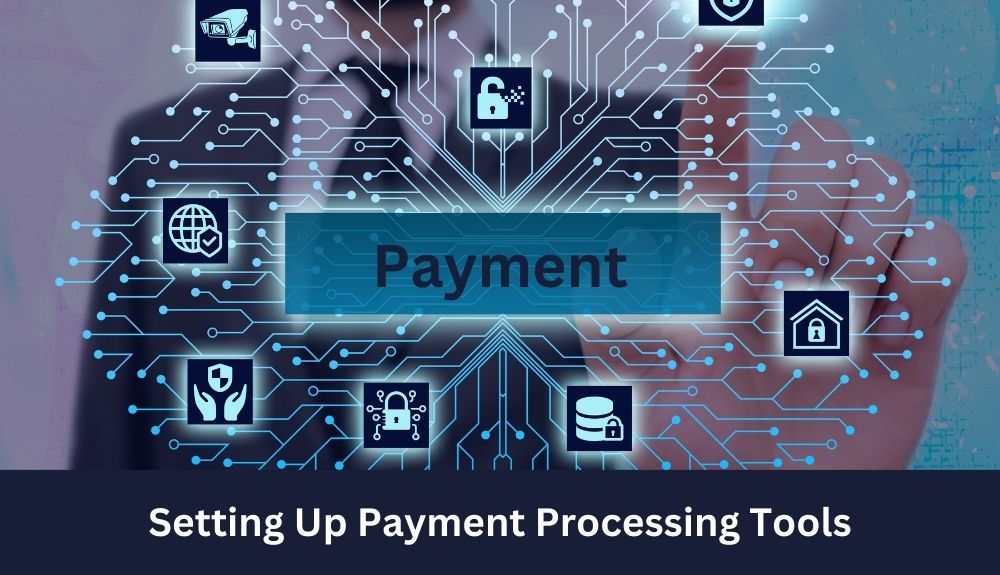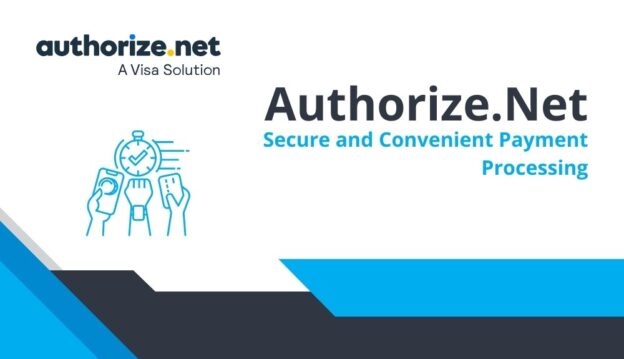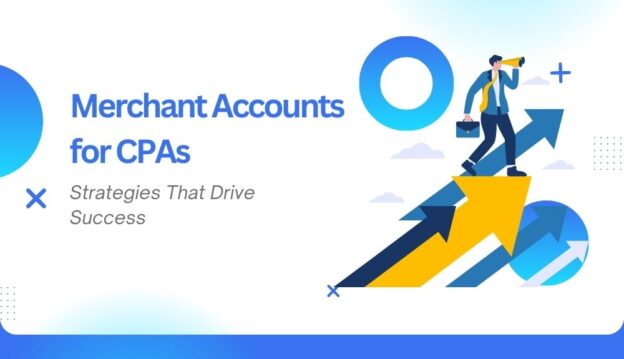Are you a debt collection agency searching for the perfect merchant account? Look no further! In this blog, we will provide you with a step-by-step guide on how to secure the ideal merchant account tailored specifically for your agency’s needs.
In this comprehensive guide, we will cover everything you need to know, including key factors to consider when selecting a merchant account provider, essential features to look for, and tips to ensure your agency’s compliance with industry regulations.
Get ready to discover the secrets to perfectly securing a merchant account that will empower your debt collection agency with seamless payment transactions, heightened security measures, and enhanced client trust.
1. Understanding Merchant Accounts for Debt Collection Agencies
If you’re in the debt collection industry, securing the perfect merchant account is crucial for the success of your business. A merchant account allows you to accept credit card and debit card payments from your clients. However, due to the nature of the debt collection business, obtaining a merchant account can be a bit challenging.
1.1 The Importance of a Merchant Account for Debt Collection Agencies
A merchant account is essential for debt collection agencies as it enables them to offer convenient payment options to their clients. Credit card and debit card payments are widely used by consumers, and by accepting these forms of payment, you can enhance customer satisfaction and increase your chances of getting paid.
1.2 The Challenges Faced by Debt Collection Agencies
Debt collection agencies are often considered high risk by merchant account providers. This is mainly due to the higher chargeback ratios associated with the industry. Chargebacks occur when a customer disputes a transaction and requests a refund from their credit card issuer, and they can be quite common in the debt collection industry. As a result, many traditional merchant account providers are reluctant to work with debt collection agencies.
1.3 Finding a High-Risk Merchant Account Provider
To secure a merchant account for your debt collection agency, you’ll need to work with a high-risk merchant account provider. These providers specialize in serving industries that are considered high risk, such as the debt collection industry. They have the expertise and understanding of the unique challenges faced by debt collection agencies, and they are more likely to approve your application.
1.4 Factors to Consider when Choosing a Merchant Account Provider
When choosing a high-risk merchant account provider, there are several key factors to consider:
1.4.1 Experience and Reputation
Look for a provider with a proven track record in serving debt collection agencies. Check their credentials, qualifications, and reputation in the industry. Consider the number of years they have been in business and their expertise in handling high-risk accounts.
1.4.2 Fees and Rates
High-risk merchant account providers typically charge higher fees compared to traditional providers. Make sure you thoroughly understand their fee structure and pricing before making a decision. Look for a provider that offers competitive rates and transparent pricing.
1.4.3 Payment Processing Solutions
Consider the payment processing solutions offered by the provider. Ensure they accommodate the specific needs of your debt collection agency. Look for features such as secure online payment gateways, recurring billing options, and integration capabilities with your existing systems
2. The Importance of Having a Secure Merchant Account
In the debt collection industry, having a secure merchant account is of utmost importance for several reasons. Not only does it enable collection agencies to accept credit card payments from their clients, but it also plays a crucial role in establishing trust and credibility with customers. Let’s delve into the significance of having a secure merchant account for debt collection agencies:
1. Ensuring Smooth Payment Processing:
Having a merchant account allows debt collection agencies to process credit card payments efficiently. This is essential, especially considering the increasing preference for electronic payments among consumers. By offering flexible payment options, such as credit card and debit card payments, collection agencies can cater to a wider range of customers and provide convenience in settling debts.
2. Mitigating Risks and Compliance:
Debt collection agencies are classified as high-risk businesses due to the nature of their operations. Thus, it is vital to partner with a high-risk merchant account provider that understands the intricacies of the collection agency industry. By doing so, agencies can ensure that their merchant accounts comply with industry regulations and standards, such as the Fair Debt Collection Practices Act (FDCPA). This helps in mitigating potential legal risks and maintaining a good standing within the industry.
3. Addressing Chargebacks Effectively:
Chargebacks can be a major concern for debt collection agencies, as they can lead to financial losses and damaged merchant reputation. However, with a secure merchant account, agencies can access tools and features specifically designed to manage and address chargebacks efficiently. These tools allow for quick dispute resolution and proactive measures to prevent fraudulent chargebacks, ultimately minimizing the impact on the agency’s financial stability.
4. Building Trust and Credibility:
In an industry that often faces scrutiny, establishing trust and credibility is paramount for debt collection agencies. Having a secure merchant account demonstrates professionalism and reliability, as it showcases the agency’s commitment to providing a secure payment environment for their clients. This, in turn, fosters trust and confidence among debtors, leading to increased client satisfaction and repeat business.
5. Expanding Payment Options:
By having a merchant account, debt collection agencies can offer a diverse range of payment options beyond credit cards, such as electronic checks or ACH payments. Providing multiple payment alternatives ensures that debtors have the flexibility to choose a method that suits their preferences and financial capabilities. This can result in higher debt repayment rates and improved overall collection agency performance.
3. Researching Merchant Account Providers for Debt Collection Agencies
When it comes to securing the perfect merchant account for your debt collection agency, thorough research is crucial. By partnering with the right merchant account provider, you can gain access to reliable payment processing services that cater specifically to the needs of the debt collection industry. Here are the steps to help you in your research process:
1. Identify your specific requirements: Before you begin your search for a merchant account provider, it’s important to clearly identify your specific requirements as a debt collection agency. Consider factors such as the volume of credit card payments you anticipate, your average chargeback ratio, and any other unique needs your business might have.
2. Evaluate the provider’s experience and expertise: Look for merchant account providers that have experience working with debt collection agencies or other high-risk industries. It’s crucial to find a provider that understands the challenges and regulations specific to the debt collection industry, ensuring they can support your unique payment processing needs.
3. Consider the provider’s reputation and track record: Reputation is key when selecting a merchant account provider. Look for providers with a proven track record of reliability, security, and excellent customer service. Read online reviews and testimonials to get insights from other debt collection agencies who have worked with the providers you are considering.
4. Evaluate pricing and fees: While pricing should not be the sole deciding factor, it’s important to evaluate the fees associated with the merchant account provider. Some high-risk merchant account providers may charge higher fees due to the increased risk associated with debt collection agencies. Ensure you understand the pricing structure, including any additional charges for chargebacks or other services.
5. Assess the provider’s security measures: Security is of utmost importance when dealing with sensitive customer payment information. Ensure the merchant account provider follows industry-standard security protocols, such as PCI-DSS compliance, to safeguard your customers’ data.
6. Verify the application process and approval timeline: Determine the time it takes for the application to be processed and approved by the merchant account provider. A streamlined application process and fast approval timeline can help you get up and running quickly with your debt collection merchant account.
4. Understanding the Application Process for a Merchant Account
Securing a merchant account for your debt collection agency is a crucial step in enabling smooth credit card and debit card payments from your clients. To ensure a seamless and efficient process, it’s essential to have a clear understanding of the application process for a merchant account. Let’s explore the steps involved in acquiring a merchant account for your debt collection agency:
1. Research Merchant Account Providers: Begin by researching and comparing different merchant account providers that specialize in serving high-risk industries, such as the debt collection industry. Look for providers with a proven track record in offering reliable services to debt collection agencies and those who understand the unique needs and challenges of your industry.
2. Gather Necessary Documentation: Before starting the application process, gather the required documentation that the merchant account provider will ask for. This documentation typically includes your business license, identification documents, bank statements, tax returns, proof of address, and any other relevant business credentials or certifications. It’s crucial to have these documents ready to expedite the application process.
3. Identify Providers with Experience in Debt Collection Industry: While filling out the application, it’s essential to highlight your debt collection agency’s specific expertise and experience. Choose a merchant account provider with a thorough understanding of the debt collection industry. They can better assess your risk profile and cater to your unique payment processing needs.
4. Complete the Application Form: Fill out the merchant account application form accurately and provide all the requested information. Be prepared to answer questions about your business structure, ownership, payment processing history, and chargeback ratio. Honesty and transparency are key during this process as inaccurate or misleading information can lead to delays or rejections.
5. Demonstrate Compliance with Regulations: Debt collection agencies must adhere to legal and industry regulations, such as the Fair Debt Collection Practices Act (FDCPA). Highlight your commitment to compliance in your application by explaining the measures you have in place to ensure your operations align with these regulations.
6. Provide Financial and Processing Details: In this section of the application, you will need to disclose information about your average transaction volume, projected monthly sales, types of payments you expect to accept (credit cards, debit cards), and details of any existing credit card debts. Providing accurate financial information will help the provider assess your account’s risk level more effectively.
7. Review and Submit: Before submitting the application, carefully review all the entered information to ensure accuracy and completeness.
5. Essential Criteria for Choosing a Merchant Account Provider
Choosing the right merchant account provider is crucial for debt collection agencies. It ensures smooth payment processing and safeguards the financial transactions of both the agency and its clients. When searching for a merchant account provider, there are several key criteria to consider. By carefully evaluating these factors, debt collection agencies can secure the perfect merchant account that aligns with their unique needs and requirements.
1. Reputation and Experience
One of the first criteria to assess is the reputation and experience of the merchant account provider. Look for providers with a solid track record in serving the debt collection industry. Research their background, customer reviews, and ratings to gauge their credibility and reliability. A reputable provider should have a good standing, industry expertise, and a proven history of serving similar businesses in the collection agency industry.
2. High-Risk Expertise
Given the high-risk nature of the debt collection industry, it is crucial to choose a merchant account provider that specializes in serving high-risk businesses. Debt collection agencies often face a higher chargeback ratio due to the nature of their business. Therefore, partnering with a provider experienced in managing high-risk merchant accounts ensures they have the necessary risk management tools and resources to mitigate potential financial risks.
3. Comprehensive Payment Solutions
A merchant account provider should offer a range of payment solutions to cater to the diverse needs of debt collection agencies. This includes the ability to process credit card and debit card payments effectively. Additionally, they should provide solutions for electronic payment processing, ensuring seamless transactions for both the agency and its clients. Look for a provider that offers a variety of payment options, allowing customers to pay conveniently using their preferred method.
4. Application Process and Approval Time
The application process and approval time are crucial factors to consider. Debt collection agencies need a fast and straightforward application process to minimize downtime and quickly start accepting payments. Look for a merchant account provider that offers a streamlined application process and has a reputation for fast approvals. It’s essential to get up and running as soon as possible to avoid any disruptions to the agency’s operations.
5. Transparent Fees and Pricing
Understanding the fees and pricing structure is essential to make an informed decision. Debt collection agencies should examine the costs associated with the merchant account carefully. Areas to focus on include transaction fees, monthly fees, chargeback fees, and any other applicable charges. Look for a provider that offers transparent pricing and clearly outlines the associated costs.
6. Tips for Preparing Your Debt Collection Agency for a Merchant Account

Before applying for a merchant account, it’s important to ensure that your debt collection agency is fully prepared. Taking the following steps will not only increase your chances of approval but also streamline the application process and set your agency up for success.
1. Understand the Requirements:
Start by familiarizing yourself with the specific requirements for obtaining a merchant account for a debt collection agency. Due to the high-risk nature of the industry, it’s crucial to find a merchant account provider that specializes in serving debt collection businesses. This will ensure that they are familiar with the unique challenges and regulations associated with the industry.
2. Improve Your Creditworthiness:
Merchant account providers assess your creditworthiness to determine the risk involved in providing you with payment processing services. To improve your chances of approval, work on improving your credit score and maintaining a good standing with financial institutions. Pay off any outstanding debts, resolve any disputes, and keep your financial records updated and accurate.
3. Prepare Your Documentation:
Gather and organize all the necessary documentation that will be required during the application process. This might include documents such as your business license, incorporation documents, bank statements, financial statements, and tax returns. Having these documents readily available will expedite the application process and demonstrate your professionalism and preparedness.
4. Minimize Chargebacks:
High chargeback ratios are a red flag for merchant account providers. Aim to keep your chargeback ratio as low as possible to demonstrate your commitment to providing high-quality service and minimizing customer disputes. Implement effective customer service practices, clearly communicate payment terms, and promptly resolve any customer issues or concerns.
5. Maintain Compliance:
Adhere to all relevant regulations and industry standards, including the Fair Debt Collection Practices Act (FDCPA). Compliance violations can not only lead to legal issues but also raise concerns for merchant account providers. Stay updated with the latest regulations and ensure that your agency strictly follows all applicable laws.
6. Seek Professional Assistance:
Consider partnering with a reputable high-risk merchant account provider that specializes in serving debt collection agencies. They can provide valuable guidance throughout the application process and help you navigate the complexities of securing a merchant account. Choose a provider with a strong track record, excellent customer service, and competitive rates.
💡 key Takeaway: Taking the necessary steps to prepare your debt collection agency for a merchant account application improves your chances of approval and sets your agency up for success.
7. Negotiating Terms and Fees with Merchant Account Providers
When it comes to securing the perfect merchant account for your debt collection agency, negotiating the terms and fees with merchant account providers is a crucial step. By understanding what to look for and how to negotiate effectively, you can ensure that you’re getting the best possible deal for your business. Here are some key considerations and strategies to keep in mind:
1. Research and Compare Providers
Before entering into any negotiations, it’s important to conduct thorough research and compare different merchant account providers. Look for providers that specialize in working with high-risk industries, such as the debt collection agency industry. Consider factors like reputation, customer reviews, and experience in handling similar businesses. This will help you narrow down your options and identify potential candidates for negotiations.
2. Identify Your Specific Needs and Goals
Clearly define your specific needs and goals for a merchant account. Consider factors such as the expected volume and frequency of credit card payments, the average ticket size, and the chargeback ratio of your industry. By understanding your requirements, you can better negotiate terms and fees that align with your business model. For instance, if your business has a higher chargeback ratio, be prepared for potential higher fees.
3. Evaluate Pricing Models and Fee Structures
Different merchant account providers may offer various pricing models and fee structures. It’s essential to evaluate these models and structures to ensure they are suitable for your business. Common fee components include transaction fees, monthly fees, chargeback fees, and reserves. Understand how these fees will impact your bottom line and negotiate for the most favorable terms.
4. Understand the Underwriting Process
The underwriting process plays a crucial role in securing a debt collection merchant account. Prepare the necessary documentation related to your business, such as bank statements, business licenses, and any certifications required by the industry. Ensure that your finances are in good standing and be prepared to answer questions regarding your business operations, payment processing history, and any potential risks associated with the debt collection industry.
8. Ensuring Compliance and Legal Considerations with Merchant Accounts
When running a debt collection agency, it is crucial to ensure compliance with applicable laws and regulations. When it comes to securing a merchant account for your debt collection agency, there are specific compliance measures and legal considerations that you must take into account. Let’s explore these important factors to guide you through the process.
1. Understanding the Fair Debt Collection Practices Act (FDCPA):
The Fair Debt Collection Practices Act (FDCPA) is a critical law that governs the debt collection industry. It sets forth guidelines and restrictions on how debt collectors should communicate with consumers and collect outstanding debts. When selecting a merchant account for your debt collection agency, it is vital to choose a provider that understands and complies with the FDCPA’s regulations and requirements. This ensures that your payment processing practices align with legal obligations.
2. Compliance with Payment Card Industry Data Security Standard (PCI DSS):
The Payment Card Industry Data Security Standard (PCI DSS) is another essential compliance requirement for businesses handling credit card transactions. As a debt collection agency, you will be handling sensitive customer information during payment processing. To protect your customers’ data, it is crucial to work with a merchant account provider that complies with PCI DSS requirements. This helps safeguard your customers’ personal and financial information, reducing the risk of data breaches and potential legal issues.
3. Assessing High-Risk Merchant Account Providers:
Debt collection agencies are generally considered high-risk businesses by merchant account providers. Due to the nature of the industry, which involves collecting outstanding debts, these businesses often face challenges in acquiring a merchant account. It is important to find a merchant account provider specializing in high-risk accounts that understands the unique needs of debt collection agencies. Look for a provider with experience in the industry and a track record of serving similar businesses, ensuring they have the necessary expertise to support your payment processing requirements.
4. Reviewing Terms and Conditions:
Before finalizing a merchant account agreement, carefully review all terms and conditions provided by the merchant account provider. Pay close attention to any clauses that may impose restrictions on your business or have financial implications. Look for transparency in pricing, potential penalties, and any limitations on payment processing volume or chargeback ratios. Understanding all aspects of the agreement will prevent any surprises or conflicts later on.
5. Customer Service and Support:
Another crucial factor to consider when selecting a merchant account provider is the quality of their customer service and support.
9. Securing Merchant Account Approval for Debt Collection Agencies
When it comes to debt collection agencies, obtaining a merchant account can be a challenging task due to the industry’s high-risk nature. However, with proper knowledge and understanding of the application process, you can increase your chances of securing the perfect merchant account for your debt collection agency.
1. Choose a High-Risk Merchant Account Provider:
To ensure a smooth approval process, it is crucial to partner with a merchant account provider that specializes in high-risk industries, such as debt collection. Look for providers that have experience working with debt collection agencies and understand the unique challenges associated with your industry.
2. Prepare Your Documentation:
Merchant account providers require detailed documentation to assess the risk associated with your debt collection agency. Gather all the necessary documents beforehand, including your business licenses, financial statements, processing history (if any), and any legal documents related to your debt collection business.
3. Showcase Compliance with Regulations:
One key aspect that merchant account providers consider is your agency’s compliance with regulations, including the Fair Debt Collection Practices Act and other industry-specific guidelines. Provide evidence of your agency’s commitment to ethical practices and adherence to regulations to enhance your credibility.
4. Maintain a Good Standing:
Your debt collection agency’s reputation plays a vital role in the approval process. Merchant account providers will evaluate your agency’s chargeback ratio and inquire about any previous issues with payment processing. It is crucial to maintain a good standing by minimizing chargebacks and resolving any payment disputes promptly.
5. Emphasize Customer Service:
Highlighting your commitment to providing exceptional customer service can help instill trust with potential merchant account providers. Showcase your agency’s dedicated support team, timely dispute resolution, and the steps you take to ensure customer satisfaction.
6. Demonstrate Financial Stability:
Merchant account providers will assess your agency’s financial stability to gauge the risk involved in providing payment processing services. Provide financial statements that demonstrate a healthy cash flow and stability in your debt collection agency’s operations.
7. Create a Strong Business Plan:
Developing a comprehensive business plan that outlines your agency’s goals, target market, growth strategies, and risk management approach can significantly impact the approval process. A well-crafted business plan demonstrates your expertise and highlights your agency’s long-term viability.
8. Mitigate High-Risk Factors:
Addressing potential high-risk factors associated with debt collection agencies can help ease concerns of merchant account providers. Implement measures to minimize chargebacks, maintain accurate records, and ensure proper debt verification processes.
10. Setting Up Payment Processing Systems with a Merchant Account
When it comes to running a debt collection agency, one of the most important aspects is setting up payment processing systems. A reliable and secure merchant account is crucial for efficiently handling credit card and debit card payments from clients. In this section, we will walk you through the step-by-step process of setting up a merchant account for your debt collection agency, ensuring smooth payment transactions and minimizing disruptions in your business operations.
1. Understanding the Importance of a Merchant Account
A merchant account serves as an intermediary between your business, the credit card processor, and the customer’s bank. It enables you to accept credit card and debit card payments from your clients. For a debt collection agency, having a merchant account is crucial for accepting payments from individuals or businesses who owe debts.
2. Identifying a Reliable Merchant Account Provider
Choose a merchant account provider that specializes in serving debt collection agencies or high-risk businesses. Look for providers experienced in handling payment processing for the debt collection industry and that offer features specifically tailored to your needs.
3. Assessing the Fees and Rates
When considering a merchant account provider, carefully review their fee structure. Keep in mind that debt collection agencies are considered high-risk businesses, which may result in higher processing fees. However, it’s important to compare different providers to ensure you are getting competitive rates for the services you require.
4. Evaluating Application Process
The application process for a merchant account varies between providers. Generally, you will need to provide documentation such as your business license, bank account information, and tax identification number. The provider will review your application and assess your risk profile before approving your merchant account.
5. Managing High-Risk Considerations
Due to the nature of the debt collection industry, it is considered high risk by many merchant account providers. Be prepared to address high-risk considerations, such as chargeback ratios and the potential for disputes. Establishing a good standing and demonstrating your commitment to following fair debt collection practices can help mitigate these concerns.
6. Ensuring Security and Compliance
Security and compliance are paramount when handling sensitive financial information. Ensure that your chosen merchant account provider offers robust security features to protect your clients’ payment data. Additionally, your agency must adhere to the relevant regulations, such as the Fair Debt Collection Practices.
11. Best Practices for Maintaining a Secure Merchant Account

When it comes to running a debt collection agency, having a secure merchant account is crucial. Not only does it ensure that your business can process credit card and debit card payments smoothly, but it also protects your customers’ sensitive financial information. In this section, we will discuss some best practices that will help you maintain a secure merchant account for your debt collection agency.
1. Choose a reputable merchant account provider:
Selecting the right merchant account provider is the first step towards securing your payment processing. Look for providers that specialize in high-risk industries, such as the debt collection industry. They will have the expertise and experience to handle the unique needs and challenges of your business.
2. Understand the application process:
Familiarize yourself with the application process for acquiring a merchant account. It typically involves providing detailed information about your debt collection agency, such as business registration documents, bank account information, and processing history. Make sure to provide accurate and up-to-date information to avoid any delays or complications in the approval process.
3. Minimize chargeback ratio:
Chargebacks can have a negative impact on your merchant account. Aim to keep your chargeback ratio as low as possible by providing excellent customer service and resolving any disputes or issues promptly. Regularly review your chargeback reports and identify areas where improvements can be made.
4. Stay in good standing:
Maintain a positive reputation by adhering to industry best practices and regulations. Familiarize yourself with the Fair Debt Collection Practices Act (FDCPA) and ensure that your debt collection practices are compliant. This will not only protect your merchant account but also build trust with your clients.
5. Implement fraud prevention measures:
Protect your merchant account from fraudulent transactions by implementing robust fraud prevention measures. Utilize tools and technologies that can flag suspicious activities, authenticate transactions, and verify the legitimacy of cardholders.
6. Monitor your account regularly:
Regularly monitor your merchant account for any unusual activities or discrepancies. Keep an eye out for any unauthorized transactions, unusual spikes in chargebacks, or suspicious patterns. Promptly report any suspicious activities to your merchant account provider to mitigate risks.
7. Provide ongoing staff training:
Educate your staff on the importance of maintaining a secure merchant account and following best practices. Train them on identifying potential fraud indicators, handling customer information securely, and resolving payment-related issues effectively.
12. Troubleshooting Common Challenges with Merchant Accounts for Debt Collection Agencies
Operating as a debt collection agency comes with its own set of unique challenges, particularly when it comes to securing a reliable and efficient merchant account. In this section, we will discuss some of the common issues that debt collection agencies often face and provide practical solutions to help troubleshoot these challenges. By addressing these concerns head-on, you can ensure a smooth and seamless payment processing experience to better serve your clients and meet your business goals.
1. High-Risk Classification:
Debt collection agencies are typically categorized as high-risk businesses due to the nature of their industry. This classification can lead to difficulties in obtaining a merchant account as many traditional financial institutions are wary of the potential risks associated with debt collection. To overcome this challenge, it is important to work with a merchant account provider that specializes in high-risk industries. They have the expertise and experience to navigate the complexities of the debt collection industry and provide tailored solutions to meet your specific needs.
2. Increased Chargeback Ratio:
Chargebacks occur when customers dispute a transaction and request a refund. Debt collection agencies often experience higher chargeback ratios compared to other businesses, resulting in potential financial losses and account restrictions. To mitigate this issue, implement robust customer service practices and clear communication with your clients. Providing excellent customer support, addressing inquiries promptly, and resolving disputes amicably can help minimize chargebacks. It is also important to regularly review and optimize your debt collection practices to reduce the likelihood of customer dissatisfaction.
3. Application Process Challenges:
When applying for a merchant account, debt collection agencies may encounter additional scrutiny during the underwriting process. The merchant account provider will assess various factors, including the agency’s compliance with the Fair Debt Collection Practices Act (FDCPA), business history, creditworthiness, and financial stability. To ensure a smooth application process, gather all necessary documentation and evidence of your business’s good standing. This could include licenses, certifications, financial statements, testimonials, and any other relevant credentials that demonstrate your professionalism and trustworthiness.
4. High-Risk Payment Processor:
Choosing the right payment processor is crucial for debt collection agencies. Opt for a high-risk merchant account provider that specializes in the collection agency industry. They will have the necessary safeguards and expertise to manage the unique risks associated with debt collection. Additionally, consider the processor’s chargeback management system, fraud prevention measures, and their ability to handle high transaction volumes efficiently.
Conclusion
In conclusion, securing the perfect merchant account for debt collection agencies is a vital step towards optimizing your business operations. By following the step-by-step guide outlined in this blog, you’ll be equipped with the knowledge and tools necessary to make informed decisions and find the right merchant account provider for your specific needs. First and foremost, it’s crucial to assess your business requirements and determine the specific features and functionalities that are essential for your debt collection agency. This will enable you to narrow down your options and focus on merchant account providers that can meet your unique needs. Next, it’s important to research and compare different providers.




























